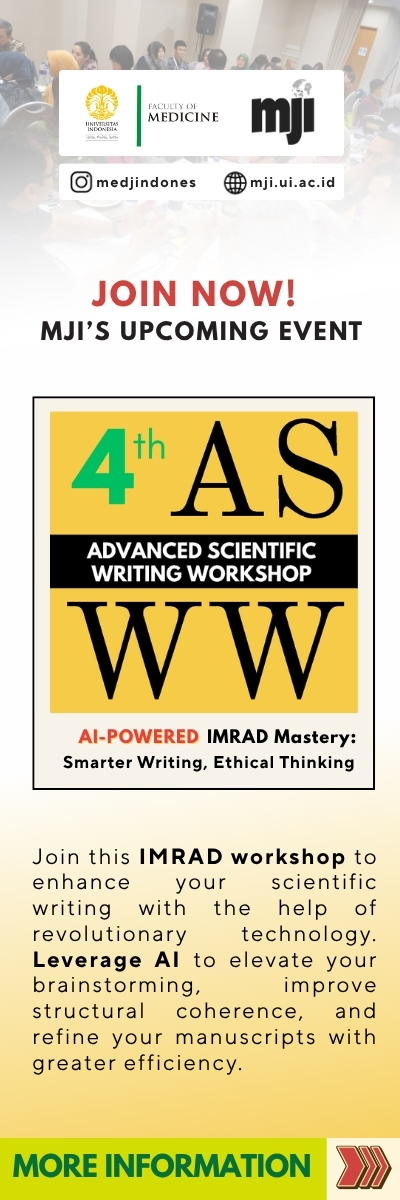Combined traditional medicine and pharmacological antihypertensive drugs in a rural community of West Java, Indonesia
DOI:
https://doi.org/10.13181/mji.v13i4.160Keywords:
hypertension, pharmacological drugs, traditional medicine, IndonesiaAbstract
Some hypertensive subjects in Indonesia consume traditional herbal medicines in addition to the usual pharmacological drugs. This paper studied the relationship between several traditional herbal medicines, such as morinda, star fruit, garlic, or jamu, believed to control hypertension and the risk of current pharmacological antihypertensive drug users in subjects with stage 1 and 2 hypertension in a rural community West Java, Indonesia. The data were obtained from 3 field studies by the second year medical students of the Faculty of Medicine, University of Indonesia conducted in 2001, 2002, and 2003 in a subdistrict of the Bogor regency. The subjects were selected randomly from neighborhood clusters. Interviews and blood pressure measurements were conducted at the houses of the subjects by specially trained second year medical students supervised by faculty members. There were 496 subjects with stage 1 or 2 hypertension, with 11.5% under current antihypertensive drugs. Compared with the hypertension stage 1 subjects, hypertension stage 2 subjects were 5.4 times more likely to be currently taking pharmacological antihypertensive medication (adjusted odds ratio = 5.44; 95% confidence interval = 2.64-11.27). The combined of current antihypertensive medication with traditional medicines were cucumber which being the most dominant followed by star fruit and morinda. Reasons for this were probably the strong influence of culture, the limited medical facilities, and high cost of the antihypertensive drugs. It was concluded that in a rural Indonesia, it was common for hypertensive subjects to take pharmacological drugs as well as traditional medicine for antihypertensive therapy. (Med J Indones 2004; 13: 246-51)
Downloads
Downloads
Published
How to Cite
Issue
Section
License
Authors who publish with Medical Journal of Indonesia agree to the following terms:
- Authors retain copyright and grant Medical Journal of Indonesia right of first publication with the work simultaneously licensed under a Creative Commons Attribution-NonCommercial License that allows others to remix, adapt, build upon the work non-commercially with an acknowledgment of the work’s authorship and initial publication in Medical Journal of Indonesia.
- Authors are permitted to copy and redistribute the journal's published version of the work non-commercially (e.g., post it to an institutional repository or publish it in a book), with an acknowledgment of its initial publication in Medical Journal of Indonesia.





































